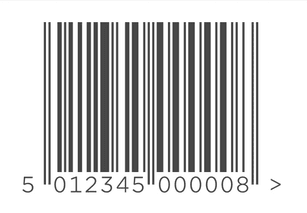GS1 UK membership
Joining GS1 UK is a straightforward process.
We require some basic information about you and your business, including your turnover and how many numbers you are likely to need. Once we have that information, we can put you in the right membership band. If you pay by card, your membership is instant.
Use our GTIN calculator to find out how many GTINs you need and receive a membership plan recommendation.
GS1 Company Prefix (GCP)
As a GS1 UK member, you will be assigned your very own GS1 Company Prefix (GCP). This prefix is central to everything you do with your membership. Because the GCP is globally unique, the GS1 identifiers created from it are also unique, meaning that your numbers cannot clash, eliminating any confusion or duplication with other companies' numbers.
Most GS1 UK members will be identifying their products using Global Trade Item Numbers (GTINs) which are created from their GCP, but it is also possible to create and allocate other GS1 identifiers which are formed from your prefix.
GLN, Serial Shipping Container Codes (SSCC) and Global Individual Asset Identifiers (GIAI) are some examples of GS1 identifiers but there are in fact twelve in total.
Read more about how to encode production data (e.g. batch, dates, LOT) in a barcode.
Assigning your numbers
You can view your GCP and allocate certain GS1 identifiers in My Numberbank, which is available through your GS1 UK member portal.
For most businesses, allocating GTINs to products will be the priority.
Depending on the size of the GCP you were given when you joined, you’ll find between 10 and 100,000 GTINs waiting for you in your Numberbank. The GTINs you assign to your products should all be stored and managed in here, along with some key product data attributes to show which product you’ve given which number to.

Many GS1 UK members need unique numbers to identify their organisation or physical locations.
The number of Global Location Numbers (GLN) available to you in your Numberbank ranges from 10 to 100,000, depending on the size of the GCP (Global Company Prefix) assigned to you upon joining.
GLNs are typically used in Electronic Data Interchange (EDI) and the Global Data Synchronisation Network (GDSN).
Other GS1 Identifiers
If you have applied for them, you will also be able to create variable measure identifiers and numbers for money-off coupons in your Numberbank.
For all other GS1 identifiers, including SSCCs and GIAIs, you will need to create and manage them in your own systems and databases. Each one of our identifiers has a very specific structure, and we are on hand to support you in getting it right.
As a GS1 UK member, you’ll have instant access to expert advice for your barcodes and services that will support you as you grow.
Generating a barcode
There are a number of different GS1 barcode symbols that you can use, depending on the identifier you are using and the scanning environment or specific situation they’ll be used in.
This video will give you a good idea of which one you should use.
If you’re using GTINs, you’ll be able to create barcodes for point-of-sale items and traded units directly in My Numberbank.
Alternatively, if you have a design agency or packaging company producing labels for you, ask them if they can generate GS1 barcode images as part of the service. Lots of companies already have the software to produce the appropriate barcodes.
If you’re looking to purchase software, use our GS1 UK Partner finder. This tool will help you connect with trusted partners who can provide the ideal software solutions tailored to your specific needs.
Printing barcodes
There are many ways to print barcodes, each suited to different requirements based on factors such as quality, durability, volume and environmental conditions. For example, thermal transfer printing is ideal for barcodes that need to withstand high temperatures or outdoor conditions, whereas laser printing is preferred for its speed and precision in an office environment. Each printing method has its unique advantages, making it suitable for specific use cases.
Speak to one of our GS1 UK partners who specialise in printing barcodes. We have partners, for instance, who specialise in marking patient wristbands, high-speed printing of QR codes powered by GS and everything in between.
If you already have a printing solution in place, speak to your provider to ensure they're able to print barcodes that comply with GS1 standards.
RFID
Although most people join GS1 UK to use barcodes, you can also use your unique numbers for Radio Frequency Identification (RFID). Some of the biggest users of RFID are apparel brands and stores and healthcare providers because of the great visibility the technology enables.
Though GS1 UK can help you with RFID standards and assist with how the numbers should be encoded in RFID tags, we strongly recommend that you speak to one of our RFID solution partners for advice on implementation.
Using your GS1 numbers
GS1 numbers should be held in a company's internal databases such as:
- Inventory management systems
- Enterprise resource planning (ERP)
- Product Information Management (PIM) system
- Quality control purposes
- Data management
Numbers should be subsequently shared externally to any trading partners who might need them.
Need extra support?
We're here to help.
Whether you’re a member, you’re thinking of joining, or you just have a few questions, our support team will be happy to help you.